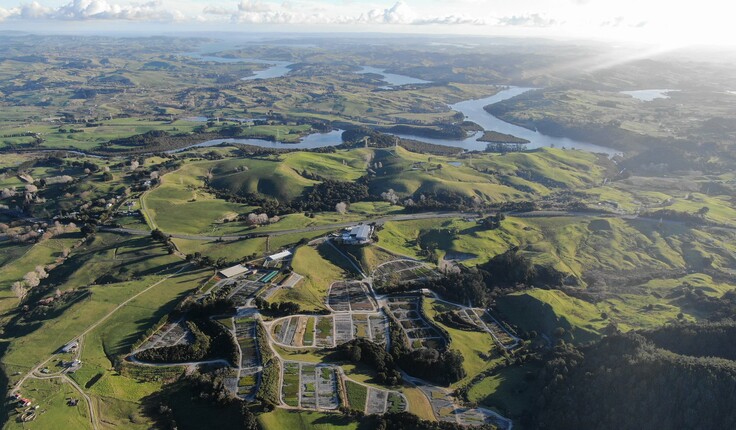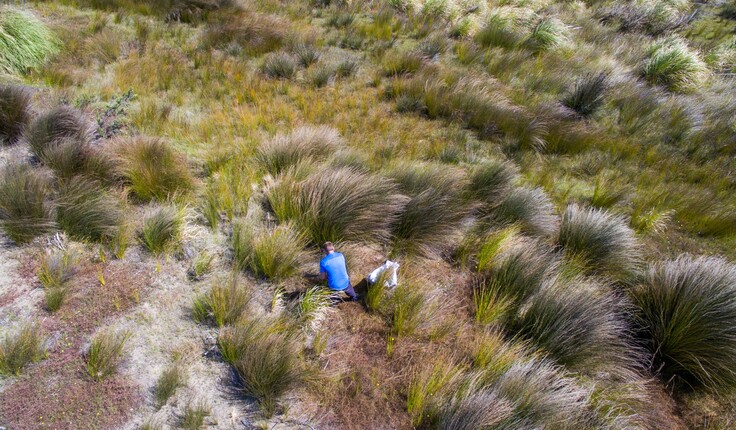News
Personal mission to restore wetlands
Posted 02 02 2022
in News

For Terry Wearmouth being part of restoring Kaipara Moana is much more than business, it’s personal. As a director at Kauri Park nurseries he’s involved in supplying the plants required to return the largest estuarine water body in the country to health. But his connection to the harbour goes right back to childhood. We tell his story on World Wetlands Day today.
“My great-grandfather grew up in this area, I was born and bred here,” says Wearmouth. “I turned 45 this year and in my lifetime I’ve seen the harbour degrade in a huge way. We used to swim off the end of our property, now the channels are disappearing and the mangroves and banks are pretty much touching. Where we used to get oysters it’s just mud. The scallops have disappeared. Where locals used to set their nets it’s just mud.
“So in less than half a century the harbour has gone backwards in an incredibly visible way. If we carry on like this we’re going to have a dead harbour. That’s what drives me.”
Kaipara straddles Auckland and Northland regions. It’s facing severe environmental degradation, mainly due to sediment - around 700,000 tonnes is deposited into the harbour each year. That’s about seven times the amount before human settlement.
The Government recognises the harbour’s global ecological and biological significance and it’s “profound” importance to Māori and recreational users (it’s the most important snapper nursery area for the west coast of the North Island).
After 20 years of lobbying by locals the Government announced $100 million multi-year Kaipara Moana Remediation funding from the Ministry for the Environment’s Job for Nature purse in 2020. It’ll contribute to a total project cost of $200 million for the first six years of an anticipated ten-year programme with co-funding from councils, landowners, industry and others.

Kauri Park will help provide the 20 million trees and other natives to be planted across 6000sq km of land with more than 8000 km of waterways. Remediation plans also include massive fencing and sediment reduction programmes.
“It’s a huge project but I think if we act urgently we can achieve what Taranaki has done,” Wearmouth says.
He’s talking about Taranaki Regional Council’s award-winning riparian management programme which has seen over 90% of its rivers and streams fenced and 80% of them planted. The programme’s been running for more than 25 years. All up it’s aiming to plant up to 6.5 million plants, by the end of this year Kauri Park will have supplied nearly half of them.
Part of its contract with the council involves eco-sourcing seeds from Taranaki, germinating and growing the plants before supplying them back to depots or landowners the following year.
Wearmouth’s proud of Kauri Park’s environmental ethos, which states Mother Nature is its only client. To that end its established Project 212. Explaining the project Wearmouth says: “there’s 425,000 km of streams and waterways. Over half of them need restoration. That’s 212,000 km of streams, rivers, estuaries and wetlands, on public and private land, that are in need of regenerative planting if we are to protect and reinvigorate our countries ecosystems.
“Our vision is to see it all planted so that New Zealand itself is teeming with vital life.
“There’s a sense of urgency now, we don’t need more talking, we need action. We’ve got to get stuff in the dirt now because we’re wasting time.”
Share
14 Apr
NZILA Board nominations close tonight

Read the insights from current Board members
What does the current Board have to say about this opportunity? REMINDER: Board Nominations close tonight, 14 April, 11.59pm We …
08 Apr
Update from Environmental Legislation Working Group
RMA Reforms and NZILA Wānanga
Our understanding of Spatial Planning and in creating well-functioning environments is more deeply considered than simply green fluff - the …
02 Apr
Follow up from the virtual IFLA World Council (22 and 23 March)

Did you attend the virtual IFLA World Council held last weekend? Presentations and ReportsThese can be found here. RecordingFor those …
Events calendar
Full 2025 calendar